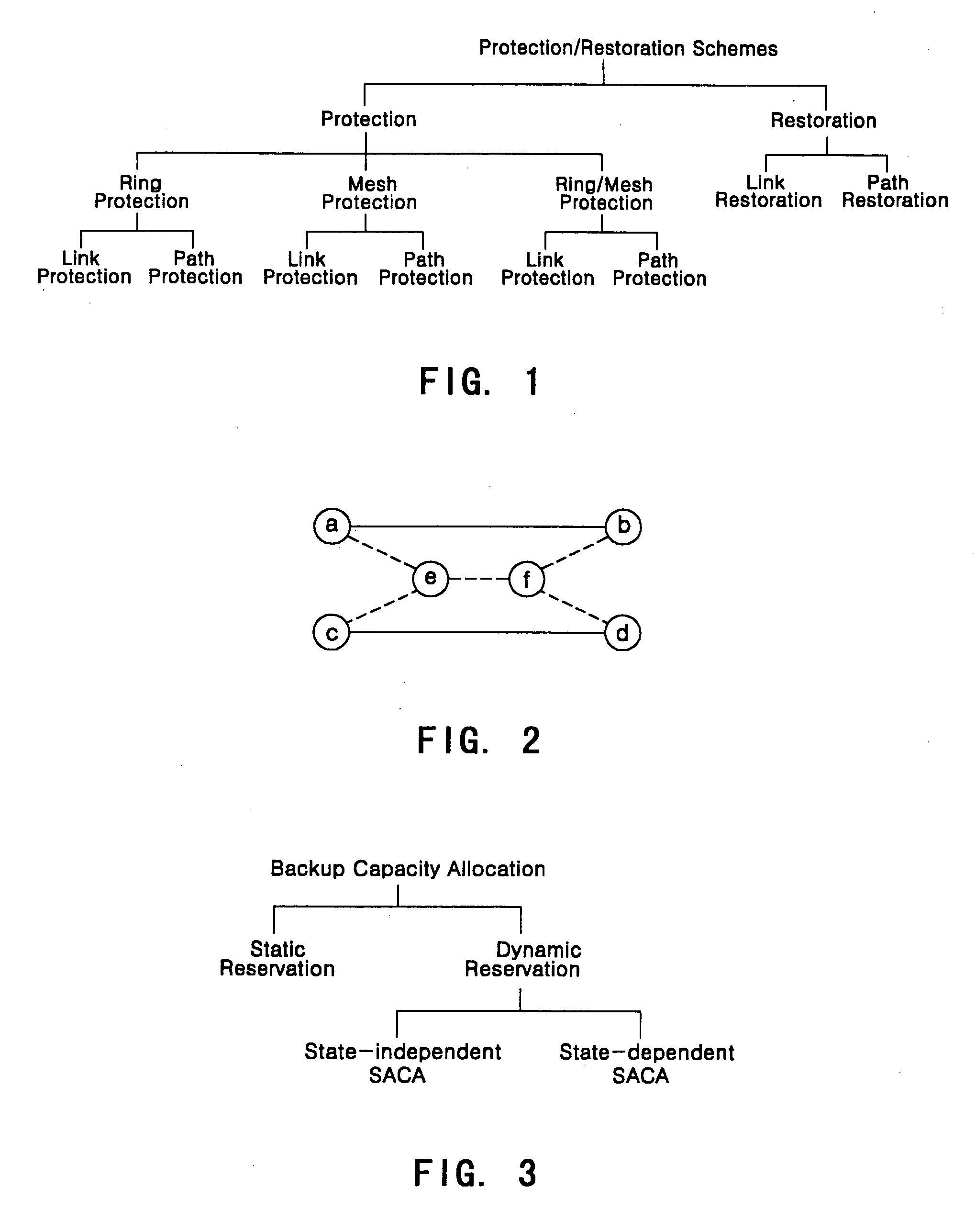Highly utilizable protection mechanism for WDM mesh network
- Summary
- Abstract
- Description
- Claims
- Application Information
AI Technical Summary
Benefits of technology
Problems solved by technology
Method used
Image
Examples
Embodiment Construction
The invented mechanism is Dynamic-network Adapted Cost selection (DAC-selection) mechanism. This is not a variation of CMC-selection like ACM-selection mechanism. DAC-selection radically changes the mechanism to select and reserve WP and BP including some elements of ACM-selection, which are not in the part of CMC-selection mechanism.
DAC-selection mechanism will be described below;
In FIG. 5, find shortest path and paths which have additional hop lengths less than 4. For instance, if shortest path has 3 hop lengths, a path having 7 hop lengths also can be a candidate for shortest path set. And then, find link-disjoint BP set by the same rule of building WP set.
Make pairs using both one of shortest path set and one of its disjoint paths for WP and BP. For example, there are two elements in shortest path set, one is 3→5→7, and the other is 3→8→7. Link-disjoint paths relative to the path, 3→5→7, are 3→6→8→7 and 3→2→4→7. Also, link-disjoint paths relative to the path, 3→8→7, is 3→...
PUM
 Login to View More
Login to View More Abstract
Description
Claims
Application Information
 Login to View More
Login to View More - R&D
- Intellectual Property
- Life Sciences
- Materials
- Tech Scout
- Unparalleled Data Quality
- Higher Quality Content
- 60% Fewer Hallucinations
Browse by: Latest US Patents, China's latest patents, Technical Efficacy Thesaurus, Application Domain, Technology Topic, Popular Technical Reports.
© 2025 PatSnap. All rights reserved.Legal|Privacy policy|Modern Slavery Act Transparency Statement|Sitemap|About US| Contact US: help@patsnap.com



